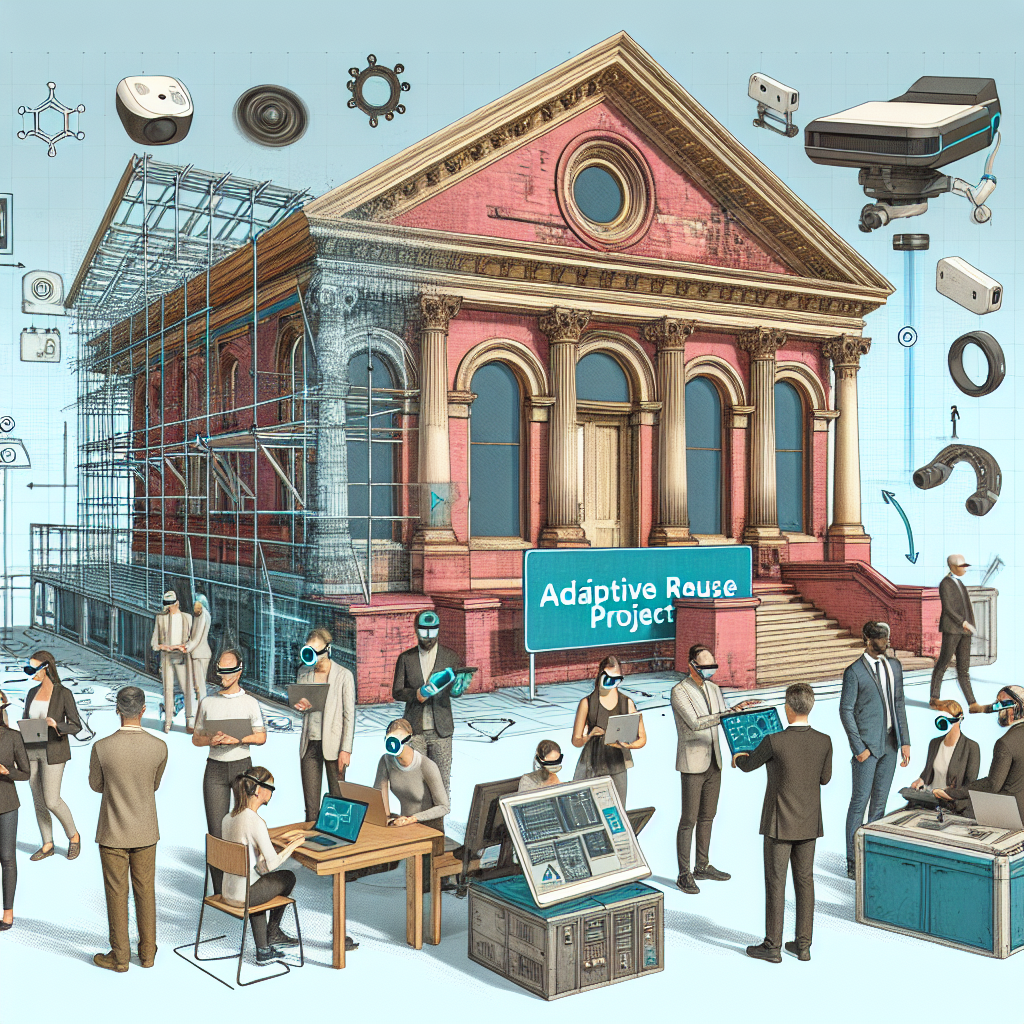AI-Driven Design for Adaptive Reuse Projects
Adaptive reuse projects involve the transformation of existing buildings or structures for new purposes. This approach to development has gained popularity in recent years due to its sustainability and preservation of historic structures. However, adapting old buildings for new uses can present unique challenges, such as structural limitations, outdated systems, and historical preservation requirements. AI-driven design has emerged as a powerful tool to address these challenges and optimize the adaptive reuse process.
AI-driven design refers to the use of artificial intelligence technologies to assist in the design and planning of projects. This technology can analyze vast amounts of data, identify patterns, and generate solutions that would be difficult or impossible for human designers to achieve on their own. In the context of adaptive reuse projects, AI-driven design can help architects and engineers to overcome the complexities of repurposing existing structures while maximizing their potential.
One of the key advantages of AI-driven design for adaptive reuse projects is its ability to quickly assess the structural integrity of existing buildings. By analyzing data such as building materials, construction techniques, and historical records, AI algorithms can identify potential weaknesses or limitations in the structure. This information allows designers to develop solutions that preserve the integrity of the building while accommodating new uses.
AI-driven design can also help optimize the layout and functionality of adaptive reuse projects. By simulating different configurations and use scenarios, AI algorithms can determine the most efficient and effective design solutions. This can include optimizing space utilization, improving natural light and ventilation, and integrating sustainable features such as green roofs or solar panels.
Furthermore, AI-driven design can assist in the selection of materials and construction techniques for adaptive reuse projects. By analyzing environmental factors, resource availability, and cost considerations, AI algorithms can recommend the most appropriate materials for a project. This can help reduce waste, minimize environmental impact, and ensure the longevity of the building.
Another valuable application of AI-driven design for adaptive reuse projects is in the preservation of historical features. By analyzing historical documents, photographs, and architectural drawings, AI algorithms can assist in the restoration of original details and features. This can help maintain the character and authenticity of the building while adapting it for modern uses.
In addition to these benefits, AI-driven design can also streamline the design process and reduce costs for adaptive reuse projects. By automating tasks such as data analysis, modeling, and simulation, AI algorithms can accelerate the design process and improve accuracy. This can result in faster project timelines, reduced labor costs, and improved project outcomes.
FAQs:
1. How does AI-driven design differ from traditional design methods?
AI-driven design differs from traditional design methods in its ability to analyze vast amounts of data and generate solutions based on patterns and algorithms. While traditional design methods rely on human intuition and experience, AI-driven design can provide insights and recommendations that would be difficult for humans to achieve on their own.
2. What are the main benefits of using AI-driven design for adaptive reuse projects?
Some of the main benefits of using AI-driven design for adaptive reuse projects include:
– Quick assessment of structural integrity
– Optimization of layout and functionality
– Selection of materials and construction techniques
– Preservation of historical features
– Streamlining of the design process and cost reduction
3. How can AI-driven design help with the preservation of historical features in adaptive reuse projects?
AI-driven design can help with the preservation of historical features by analyzing historical documents, photographs, and architectural drawings to assist in the restoration of original details and features. This can help maintain the character and authenticity of the building while adapting it for modern uses.
4. What are some examples of successful adaptive reuse projects that have utilized AI-driven design?
There are several examples of successful adaptive reuse projects that have utilized AI-driven design, such as the transformation of old warehouses into mixed-use developments, the conversion of historic churches into event spaces, and the repurposing of industrial buildings into residential lofts. These projects have demonstrated the potential of AI-driven design to optimize the adaptive reuse process and create innovative and sustainable solutions.
In conclusion, AI-driven design has the potential to revolutionize the way adaptive reuse projects are approached and executed. By leveraging the power of artificial intelligence technologies, designers can overcome the challenges of repurposing existing structures while maximizing their potential. From assessing structural integrity to optimizing layout and functionality, AI-driven design can help create innovative and sustainable solutions for adaptive reuse projects. As this technology continues to evolve, we can expect to see more creative and successful adaptive reuse projects that preserve our architectural heritage while meeting the needs of modern society.

